Tuesday 14 to Saturday 18 May 2013, to Suwalki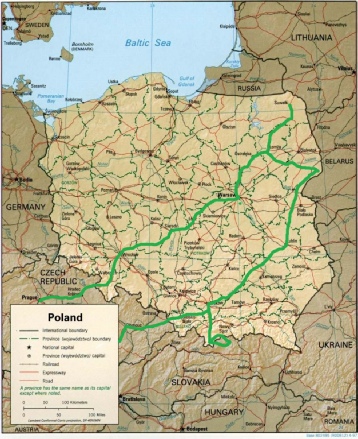
After a few days rest we headed for Wroclaw. Last time we didn’t have time to visit the old town. I’s a nice place. The middle of the main square is made up of buildings which now contain restaurants. Lunch was a Polish soup for me and sausages prepared a Polish way for Pieter.
The shrines in each village seem to have been redecorated. They are all shiny and new. The graveyards also look as if new flowers have been placed there. The flowers are 99% artificial but they do add colour and cheer.
The Poles obviously like storks. There are special platforms everywhere built on high stands or added on top of an electricity pole. They are all in use.
Once in Warsaw we looked for the campground we had stayed at previously. Unfortunately there is a lot of new development where it had been. Eventually we found another campsite but it was closed. In the end we stayed outside. At least it was a very quiet area.
In Prague Pieter had dropped his camera. Now we had to find a repair facility. McDonalds came in handy once again. and with the address in hand we were able to find it. Thankfully they could repair it and it would be ready in a week. This suited us as we could come by on our return from Suwalki.
Sunday 19 to Wednesday 22 May 2013, Suwalki
Why come all the way up to the north of Poland? To have the exhaust fixed of course! Tomek Gajewski in B. Krzywustego ul is very experienced in fixing 4x4s. Last time we were here we did not have the time needed to allow him to fix a flexible section to the exhaust he had crafted to fit the unusual space at the side of the car. This meant that it vibrated with the engine and still kept touching the side of the car. He had improved it though. By now the exhaust had actually broken off from the engine and was very noisy. The break was exactly where the flexible pipe had to be fitted. The engine was taken out, the pipe connected and no more noise. Time will tell if this is definitely the final solution but the exhaust no longer vibrates nor touches the side of the car. Heavenly quiet.
The sun came out, the days were hot, so I packed the warm clothes away. Silly me, Europe is cold and wet. The warm clothes came out again.
Thursday 23 to Sunday 26 May 2013, Warsaw
We returned to our free camp in Warsaw. This time our objective was to obtain a Ukraine visa for me. This is no longer easy. Europeans do not need a visum. Australians require a bank statement to prove they have money, medical insurance, a copy of the car papers and a hotel voucher. The last is to ensure they don’t sleep on the side of the road. Obviously Europeans can sleep in the gutter if they want nor do they have to have sufficient money to pay for them selves! Damn. I would really have liked to go to the Ukraine again.
The upside was passing a camp ground, actually the same one as before in its new location. A definite plus in the rainy weather. The campsite is close to the city and transport. The old city was much better than I remember. Last time I thought the ambience was rather dead even though we visited in August. We had also seen too many old towns by then. This time it was full of life. There was a very interesting display of colour photos taken by an American just after WW2. These had been published on the Internet without the American’s permission and someone in Warsaw had seen them. They communicated with the photographer and the display is the result. Apparently there were only black and white photos in Poland.
Monday 27 to Thursday 30 May 2013, Bialowieza and Lublin
There are very few European Bison left in Europe and these are in reserves in Poland and Belarus. We went to look at some. The area is well set up for tourists. The result? You pay for parking anywhere, and it is relatively expensive. The tourists were mostly well behaved Polish school children, just loud as with all children. The main attraction is the museum. You have to go on a guided tour as the guide turns the lights for the displays on and off. The tours are in Polish but if you do not speak Polish you are given an audio guide. The displays are very well set up and the guide informative. Subjects cover the ecology of the natural forest and range from the history of the area, forest products and the flora and fauna in the forest. There are displays about the different trees, plants and fungi plus the Bison, large animals, small animals, birds and insects. It is very comprehensive.
I learnt (remember) a few things. The forest is still in its primeval state because for centuries it was a royal hunting preserve. It was left alone, no clearing, no taking of wood or grass, no traffic and limited hunting, except for poaching by the local peasantry. There was some industry in the early 20th century but this was stopped in the interests of conservation. Another item concerns insects. There are hundreds more insects in dead wood than in live wood. There are also many insects, birds and small animals that live in hollow living trees, much more life than I would have expected.
We had lunch in the adjoining restaurant as it was pouring with rain when we came out of the museum. We had a Russian soup with olives and pickled cucumbers. A strange combination but it was really nice
The Bison Reserve was a big disappointment. There were all of 4. There was also 1 Lynx plus horses.
Lublin was another old town on the road to Krakow. Driving through many small towns
we saw many people on their way to church. It seemed as if the whole community was
involved. Plus many young girls were dressed in lovely white dresses. It wasn’t until
we stopped in Lublin that we discovered it was Corpus Christi, a day when it seems
as if everyone attends a celebration. We arrived in the old town in time to see a
procession. There were lots of clergy and altar boys, young boys dressed in white
jackets and two rows of young girls throwing flower petals before the bishop (arch-
Once the procession had passed the restaurants opened up and immediately had several customers from the congregation. Not everyone attended the service which could be heard going on nearby.
Friday 30 May to Sunday 16 June 2013, Krakow
Pieter was not feeling well by the time we arrived in Krakow. He had a bad ear ache which he put down to an infection. After 5 days the earache had been replaced with a moving pain in his head and a swollen right side of his face. Something had to be done! Reception suggested we go to the local hospital emergency room. They were very helpful but it took all day! First we had to wait in queue for a few hours, as to be expected. The doctor believed it to be some sort of allergy and prescribed 2 sodium chloride drips with various injections and tablets to take over the next few days. The drips went very slowly. I did ask for them to be speeded up but it still took over 2 hours per drip. Pieter slept through most of it while I sat around and waited. This was on the Friday. By Monday he was a little better and the swelling had gone down somewhat. The headache remained and the raised scabs he had noticed remained. Back to emergency with another long wait as about 5 emergency patients arrived. This time the emergency doctor had no idea what could be wrong. The neurological consultant ruled out a problem with the brain. Test showed nothing. We were taken to another hospital to consult with a virus consultant. She took one look and concluded that the problem was shingles even though the spots (scabs) were not the usual kind. Different medication was prescribed and we headed home. We had intended to go by public transport but it started pouring with rain. Luckily there was someone else who wanted to take a taxi. She ordered two. Just as well, it would have taken half an hour just to find our way out of the hospital complex. Pieter started on the tablets and finally really began to improve.
In the meantime I did some sightseeing. There are 3 ‘old’ areas in Krakow, Kazimierz, the castle and the old town.
Kazimierz is the old Jewish quarter outside the city walls. We had been on a Schindler’s List tour in 2006 and I wanted to revisit the quarter. Naturally things have changed. The main square has many restaurants along the side and tourists are definitely catered for every where. I enjoyed just walking around. I did go into the Ethnographic Museum and the Old Synagogue. The synagogue now houses a museum on Jewish traditions with comparisons between Polish and other traditions. I found it very interesting. The Ethnographic Museum is well laid out and the display on festival dresses from around Poland was on a par with Chinese Museums, the highest accolade I can give. Besides Polish dress it covered many other aspects of Polish life.
The castle has the usual displays of royal jewelry, royal apartments and a 14th century
cathedral. I skipped these and went through ‘Lost Wavel’ showing old foundations
and the site of the Rotunda of St Felix and Virgin Mary. On the way out I descended
through the Dragon’s Den. Legend has it that there was once a fire breathing dragon
terrorizing the land. The King promised to give his daughter in marriage to the man
who killed the dragon. Many tried and died. Krak a shoe-
The ‘Old City’ has an enormous square with the old Town Hall (now a souvenir market)
in the center. It is full of tourists and horse drawn carriages. Restaurants line
all sides of the square. The largest edifice is the Church of St. Mary. This contains
the Veit Stoss altar. It was created between 1477 and 1489 and at 11 m x 13 m is
the largest of its kind in Europe. The figures are 2.7 m high -
Again I enjoyed walking around the square. On the way home I went through the 14th century Florian Gate and passed the Barbicon. My destination was the Galeria Krakowska, a modern shopping complex, and a chocolate milkshake at McDonalds. Its so nice to be in a country that has milkshakes.
Next day Pieter said he was well enough to come to the salt mines with me. We took the wrong bus and decided to see the old town where I had been the day before. We spent quite a few hours there sitting in a restaurant having a “small” (I say extra large) cup of coffee and lovely cakes. We just sat and watched the horse carriages, the people, the live statues and the world in general.
Now it was time for the Salt Mines. After his trip to town the day before Pieter did not feel up to another trip straight away. Just as well he didn’t come with me. It takes over an hour each way by public transport. Then the walking would have been far too much for him. Half a kilometer from the bus to the entrance, another 2 kilometers (or so they say) inside starting with almost 400 steps down, another 10 minutes walk once the tour is finished to get to the lift. Yes thankfully you go back up by lift! Then finding out where you have exited in relationship to the entrance and another half k walk to the bus stop. It was more than enough for me.
The salt mines are in Wieliczka. The mines have been in operation since the 16th century. Before then, from around 3,000 BCE, water was taken from nearby wells and the water evaporated to produce pure salt. The rock salt is considered very good quality and is crushed and used as is. It does have some mineral content though which makes it look greyish. The mine I went through is no longer in use to mine salt. It is for tourists only. The main attractions are the sculptures made from the rock salt. They are very well done especially those in the Chapel of the Blessed Kinga. Unfortunately these statues only last about 250 years before they dissolve. Earlier statues are almost unrecognizable. The chandeliers were the most interesting for me. The base and lights are not made from salt but all the “glass” baubles are. The tour includes information on the mining itself. The dangers of mining such as water and methane gas and how to overcome these, the methods used to transport the rock salt from the mine using horse and winches and the legend of the princess were covered. Horses were actually kept down in the mine and used to work the winches as well as to pull wagons of rock salt from the work area to the winch. The princess wanted eternal life and was told she could achieve this if she threw away her ring. She duly did so. Then she encouraged her father to start mining for salt. Unfortunately the first load of rock salt also produced her ring.
Finally Pieter felt well enough to be back on the road. His feet were itching to get going. The weather had been glorious for a few days and the ground was drying out. Maybe summer has arrived.
Monday 17 to June 2013, Zakopane
We headed south to the high Tatras, part of the Carpathian mountains. This is a lovely area even though the mountains themselves are not that high. A days rest and we were on the move again. The plan was to drive a loop through Slovakia, crossing the Carpathians, and head further east in Poland to drive through another section of the Carpathians. It was a lovely drive, wonderfully scenic. Heading north from Slovakia Pieter felt very tired and we decided to return to Zakopane rather than find another campsite. Once again we stayed until Pieter felt ready to move. Its not surprising as it takes 4 to 5 weeks to recover from Shingles at Pieter’s age. I improved my fitness level. For 8 years I haven’t done much exercise. Now I happily walk the 5 k return trip into town to the supermarket. All the walking in Krakow helped. The weather has been patchy though. Gloomy wet days were interspersed with the occasional beautiful sunny days.
Washing clothes was a problem. After days of rain, the sun shone and I washed. The rain came poring down in the afternoon again. Luckily there was a shed nearby where I could put up a drying line. By taking as many items as I could manage at a time into our nice warm heated car I gradually dried them all. It took 3 days!
The weather forecast was rain, rain and more rain, but Budapest always seemed to be sunny. So that is where we headed once Pieter felt ready to move on.
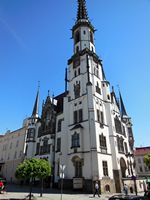
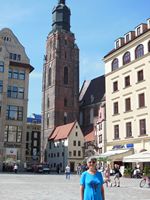
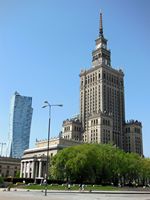
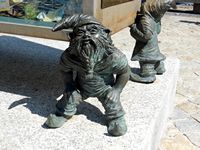
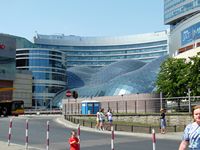
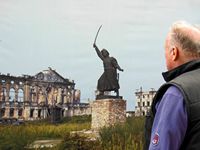
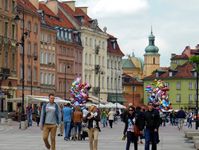
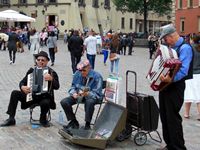
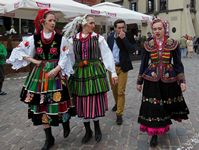
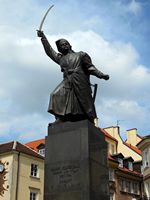
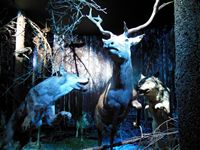
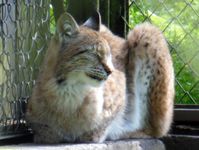
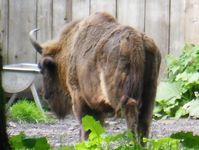
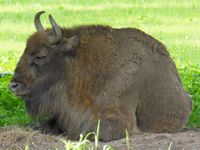
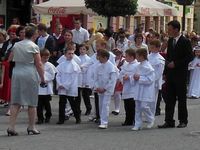
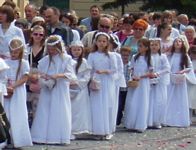
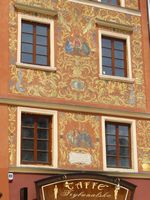
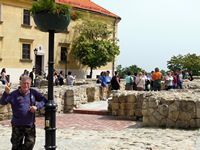
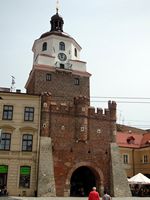
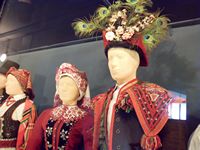
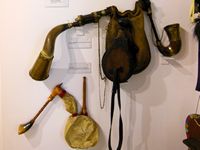
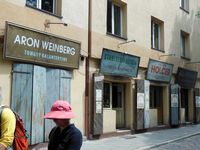
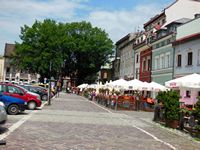
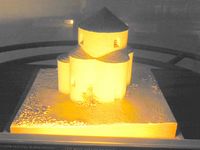
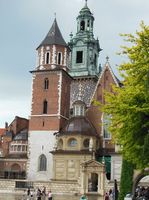
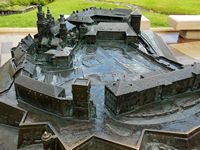
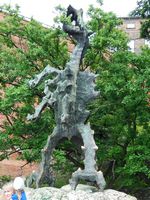
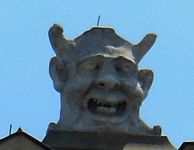
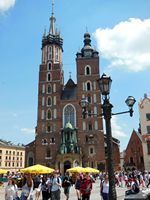
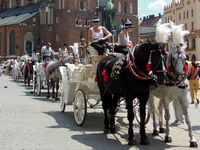
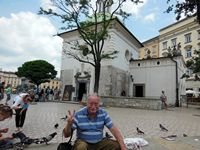
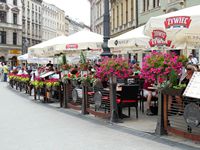
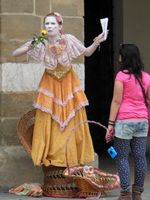
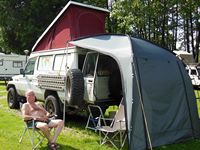
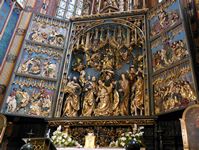
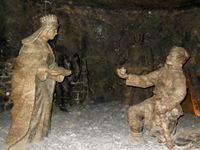
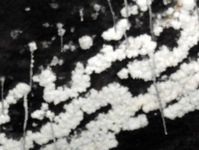
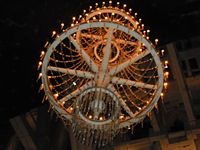
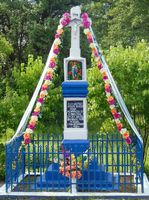
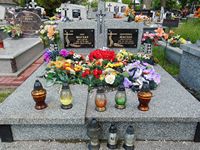
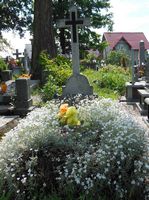 Next to Hungary
Back to Interregnum 2012-2013
Europe
Home
Next to Hungary
Back to Interregnum 2012-2013
Europe
Home
|
Averages |
Euro |
|
Cost of diesel per litre |
1.23 |
|
Cost of Camping per night |
13.59 |
|
Cost of Hotels per night |
N/A |
|
Daily expenditure |
55.73 |
|
Totals |
|
|
Kilometers traveled |
2 641 |
|
Days in country |
47 |


